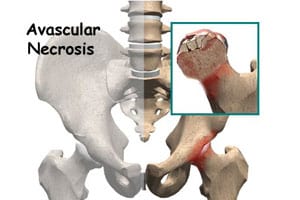
Metal-on-metal hip implant devices can cause synovitis—inflammation of the joint lining—and this significant adverse side effect can appear long before patients experience symptoms, according to a new study. The study also found that magnetic resonance imaging (MRI) can be used to identify synovitis, said researchers at the Hospital for Special Surgery, wrote Health Canal. The […]
 Metal-on-metal hip implant devices can cause synovitis—inflammation of the joint lining—and this significant adverse side effect can appear long before patients experience symptoms, according to a new study.
Metal-on-metal hip implant devices can cause synovitis—inflammation of the joint lining—and this significant adverse side effect can appear long before patients experience symptoms, according to a new study.
The study also found that magnetic resonance imaging (MRI) can be used to identify synovitis, said researchers at the Hospital for Special Surgery, wrote Health Canal. The research appears in an upcoming issue of the Journal of Bone & Joint Surgery.
The finding is important because it shows that MRI can be used to identify metal-on-metal hip implants that will likely fail before patients suffer symptoms typical with a failed device. “The study shows that synovitis exists in asymptomatic people in a fairly high prevalence,” Hollis Potter, M.D., chief of the Division of Magnetic Resonance Imaging at Hospital for Special Surgery, in New York City, told Health Canal. “If that is the case, symptoms alone are insufficient to determine the health of an implant. You can’t wait for people to be sore before we evaluate them for this potential problem.” In fact, say the researchers, MRIs are a helpful tool in identifying patients who need revision surgery before their bodily tissue suffers additional damage that makes revision surgery more difficult and complex, according to Health Canal.
Hip resurfacing is a surgical alternative to total hip replacement (THR) and involves placing a metal cap over the femur head. A matching metal cup, similar to what is used in a THR, is placed in the pelvic socket, Health Canal explained. The surgical option is popular because it allows for preservation of more of the patient’s thigh bone than what is seen in traditional hip replacement. Unfortunately, metal devices have been associated with synovitis.
Participants were the first 69, consecutive subjects—74 hip resurfacings—from three surgical practices who were referred to the Hospital for Special Surgery and who received an MRI following metal-on-metal arthroplasty, explained Health Canal. The patients were classified as either asymptomatic (no pain), having unexplained pain, or symptomatic with a mechanical cause (device loosening, dislocation, periprosthetic fracture, or faulty device positioning), said Health Canal. The MRIs were reviewed by two musculoskeletal radiologists who did not know into which group the patient belonged. X-rays and serum cobalt and chromium levels were measured and demographic data (age, gender, body-mass index, and time since arthroplasty) were taken, according to Health Canal.
Synovitis was found in most—68 percent—of the asymptomatic hip patients, in 75 percent of the symptomatic hips with a mechanical cause, and in 78 percent of the hips with unexplained pain. “What was really interesting about this study was that we found that synovitis was detected in the same amount in symptomatic and asymptomatic patients,” said Dr. Potter, according to Health Canal. “The data show that there is a high prevalence of abnormal synovial response in both symptomatic and highly functioning, asymptomatic patients who have undergone metal-on-metal arthroplasty, indicating that symptoms alone are insufficient means by which to monitor patients,” Dr. Potter added.
Because no significant differences were seen in the X-rays or serum ion levels, the team concluded that these methods are not effective predictors of damage. “Many people focus on serum ion levels,” said Dr. Potter. “I think the direction of the pendulum is really changing now, away from serum ion levels and toward imaging, or at least not to focus so much on serum ion levels to predict potential damage. Cross sectional imaging is the way to go, and specifically, MRI over CT based on its superior soft tissue contrast,” he noted, according to Health Canal.
Prior to this, Orthopedics Today reported that Dr. Donald S. Garbuz and his team discovered that ultrasound is helpful for diagnosing pseudotumors in asymptomatic patients implanted with large head metal-on-metal hip implants. “Both tests, ultrasound and metal-reduction MRI, performed well for the detection of pseudotumors. However for screening or initial diagnosis, I would say to you that ultrasound in an experienced ultrasonographer’s hand would be the preferred method due to its 100 percent sensitivity and lower cost,” said Dr. Garbuz, Orthopedics Today reported.
Metal-on-metal hip implants have long raised safety concerns in response to reports that the devices lead to early failure and other complications by releasing metal ions into the patient’s bloodstream and surrounding tissue. We’ve repeatedly written that research has linked metal-on-metal hip implant devices to a number of adverse events such as tissue necrosis, pain at the implant site that sometimes spreads to the groin and back, inflammation, swelling, metal poisoning, high failure rates, osteolysis (bone loss), and fluid collection/solid masses around the hip joint. The issue appears to be with the metal used in the construction of the implants, which was touted to last for at least two decades.


